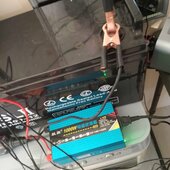@corporal_Canada
- It would be a good idea to start from the beginning: do a power audit (what are the exact power requirements, how long do each of those run per day, etc). This will give you an idea of how much solar and battery you're going to need.
- Batteries are currently dropping in price, solar panels are pretty cheap already, and there is no need to limit to 100W panels or anything. A decent charge controller (i.e., not PWM) is going to make a big difference.
- Don't buy anything yet: do the calculations (or learn how these work, understand them), make sure you know why you're going to make the decisions you're going to make.
- Baby steps
Comme on dit en français: petit à petit, l’oiseau fait son nid.
- It would be a good idea to start from the beginning: do a power audit (what are the exact power requirements, how long do each of those run per day, etc). This will give you an idea of how much solar and battery you're going to need.
- Batteries are currently dropping in price, solar panels are pretty cheap already, and there is no need to limit to 100W panels or anything. A decent charge controller (i.e., not PWM) is going to make a big difference.
- Don't buy anything yet: do the calculations (or learn how these work, understand them), make sure you know why you're going to make the decisions you're going to make.
- Baby steps
Comme on dit en français: petit à petit, l’oiseau fait son nid.



